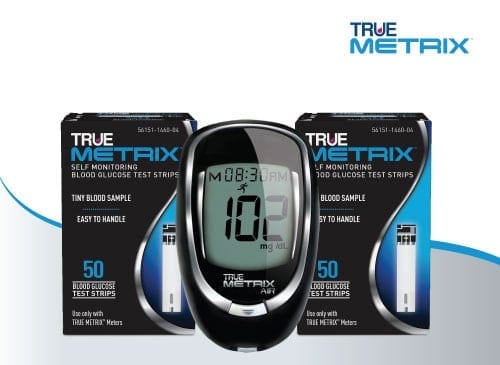We like to continue to share some of the ongoing questions and answers from the diabetes self- management classes. This brings awareness to other patients like you and what you may be asking. Always feel free to share your diabetes questions with us and our readers.
What is sprouted bread and is it good if I have diabetes?
One of the new buzz words in the health food market is “sprouted.” Sprouted bread tends to have less impact on blood sugars and is loaded with nutrients. Sprouted bread was originally only found in the freezer or refrigerator section of health food stores but can now easily be found in the bread isle of regular grocery stores. Usually, the sprouted bread found at room temperature on shelves is only 50% sprouted and may contain more preservatives. You may want to rely on the kind that is refrigerated. Sprouted bread comes in English muffins as well as regular sliced bread. Sprouted bread can be made from wheat, rye, barley, oats, millet or lentils. Regular bread is made from hard kernels which are ground up and made into flour. Sprouted bread is made up from grain that is sprouted prior to being ground into flour. Sprouting involves, “soaking the grains in water until they begin to sprout.” Sprouting minimizes “presence of phytic acid” which makes digestion and nutrient absorption easier. When the grain is sprouted it becomes more “nutrient dense and has a lower glycemic impact.” It allows you to absorb iron, calcium, B vitamins fiber and folate added to the bread, better. Any grain can be sprouted prior to being made into a flour. Most people think it has a nutty and tangy flavor and works well in place of regular bread.
I’m Latino and my culture is used to eating plain white rice daily. Is that bad when you have diabetes?
Rice is the main source of food for half the world’s population. More important than the color of the rice is the portion size. 1/2 cup of rice is counted as one serving and according to the American Diabetes Association,” most people with diabetes can eat 2-4 servings of carbohydrates per meal.” Most restaurants serve 2 cup portions per meal which equates to almost 90 carbohydrates. That is way too much for someone with diabetes! You can eat white rice but it depends on your daily blood sugar control, weight, activity level and A1C number. With that said, white rice is “refined” which means the nutrient dense parts: bran, germ and hull, have been removed leaving “a sticky, starchy center.” White rice is like table sugar which does have a high impact on blood sugars.
The glycemic index of white rice is high, between “72-83.” Foods with a high glycemic index are quickly digested into glucose causing rapidly elevated blood sugars and hunger sooner. Although all rice is carbohydrates, think about adding brown, red and black rice which has more flavor, fiber and more phytochemicals. The glycemic index of brown rice is “48-62.” Fiber is known to decrease insulin resistance. Wild rice is not actually a rice, but a grass. It is full of nutrients and rich in flavor. Another factor concerning rice is the length of the grain. There are short and medium length rice grains which are starchier since they contain more amylopectin. Long grain rice has more amylose which is less starchy and fluffier and may have less impact on your blood sugar.
If eating white rice, think about jasmine or basmati which have less starch since they are long grain. Add other ancient grains such as amaranth, barley, quinoa, buckwheat and bulgur. All of these grains have different flavors and textures and may make your meals more adventurous. There are also new products on the market which resemble the texture of rice but are made completely from cauliflower or broccoli and found in the freezer section. When serving any rice, make it a small part of a complete meal surrounded by vegetables such as onions, peppers, celery, broccoli, cauliflower and mushrooms and add a lean piece of protein like chicken, lamb, fish, tofu, beef or pork. If you can’t give up white rice completely, consider cooking it and refrigerating for 15-20 hours to increase the resistance starch. The more the resistance starches, the lower the impact on blood sugar.
Why is swimming considered such good exercise when you have diabetes?

My neighbor eats seeds on everything. What is eating seeds good for?
There are many seeds which you can easily add to your salads, cereals, smoothies, yogurt or morning toast for an extra boost of nutrition. Seeds are an excellent source of protein, fiber, healthy fats and contain antioxidants. They do contain some carbohydrates but if eaten in a small portion, it should not have an impact on your blood sugars. They are high in calories so again, watch portion size. Hemp seeds furnish protein and Omega 3 and 6 fatty acids which can enrich hair, skin, nails and may decrease cholesterol. Flax seeds have soluble fiber, increase satiety and may decrease cholesterol. Chia seeds are high in folate, copper, vitamin K, calcium, selenium and magnesium. They also contain fiber and Omega 3 fatty acids. Pumpkin seeds contain zinc, vitamin B, magnesium, protein, phosphorous and tryptophan which is an amino acid that may decrease anxiety. Pumpkin seeds can also be made into a low carbohydrate flour. Sesame seeds are high in protein, zinc and antioxidants and can easily be thrown into a meal stir-fry. Sunflower seeds help increase immunity, have folate and vitamin E and add a crunchy texture to foods. Sunflower seeds can be made into a low carbohydrate flour. Store seeds in the refrigerator or freezer since they can go rancid due to their fat content.
Is my home glucose meter really accurate?

I never know what to carry with me when they say, “always carry a snack.”
According to the Nutrition and Dietetics Diabetes Care and Education practice group, “good choices to use for snack foods include small servings of fresh fruit, small cups of fruit packed in water, part skim cheese sticks, rounds or wedges, a handful of nuts or seeds, 100% whole wheat crackers, plain air- popped popcorn, baby carrots, tomatoes, and celery.” If you crave a sweet treat, rely on “100 calorie” snack packs. They contain no nutritional value, but may prevent you from binging on something else. Eat a rye crisp with a spoonful of nut butter or a spoonful of hummus on a low carbohydrate tortilla. Consider plain Greek yogurt if you have refrigeration and add a few nuts, seeds and berries. You can get creative and make your own trail mix balls by combining sunflower seeds, peanuts, pumpkin seeds, dried cherries, crispy cereal, a dash of cinnamon and a touch of honey to bind all the ingredients. These can be high calorie so just one should do the trick! You will have a wholesome, sweet and salty snack.
Questions from patients like you can give you a better understanding of how to manage your diabetes. Many patients tend to have the same questions so learn all you can!
Have a question or comment? Then post below, no registration required. I would love to hear from you!
NOTE: Consult your Doctor first to make sure my recommendations fit your special health needs.







Leave A Comment